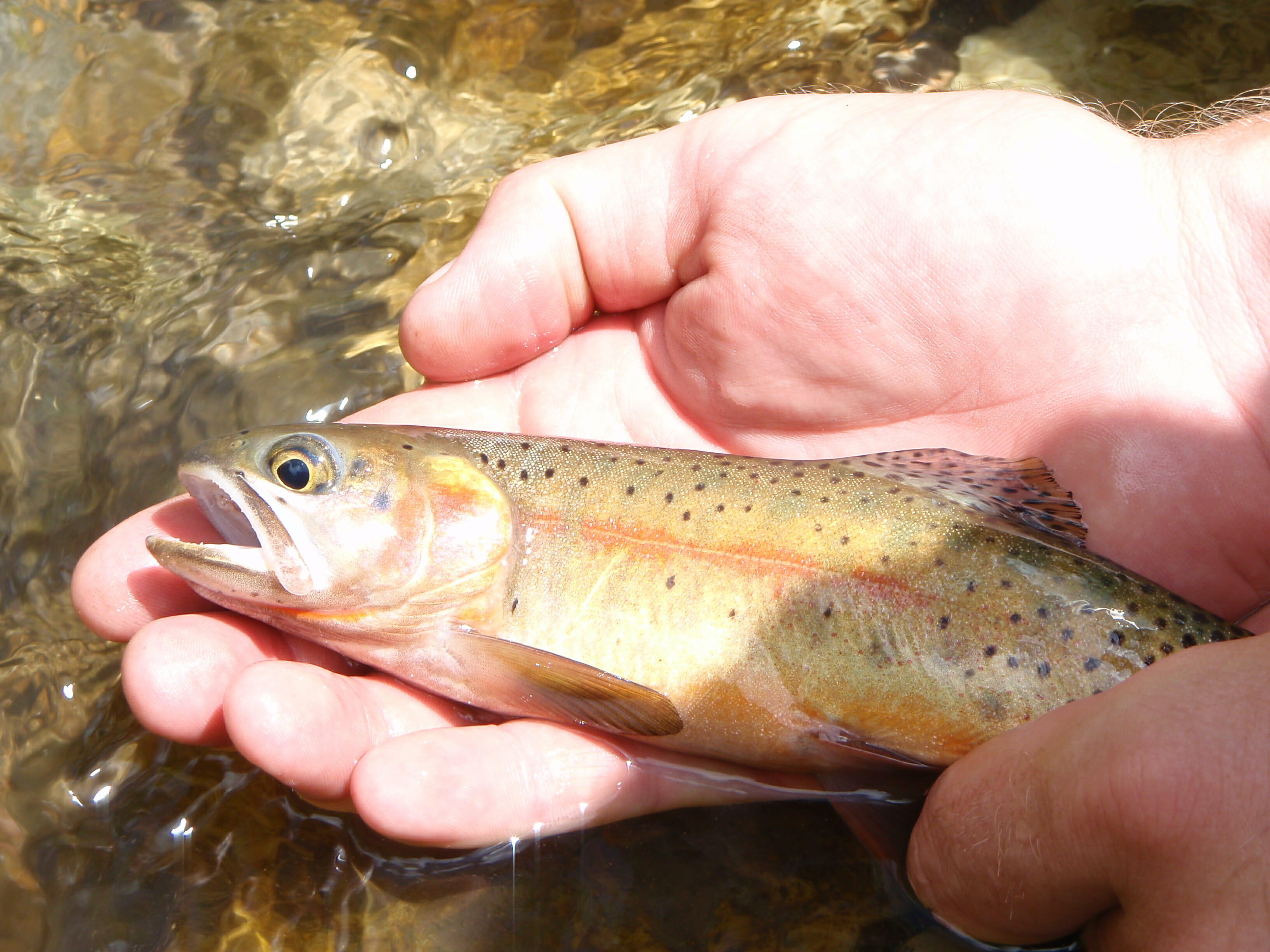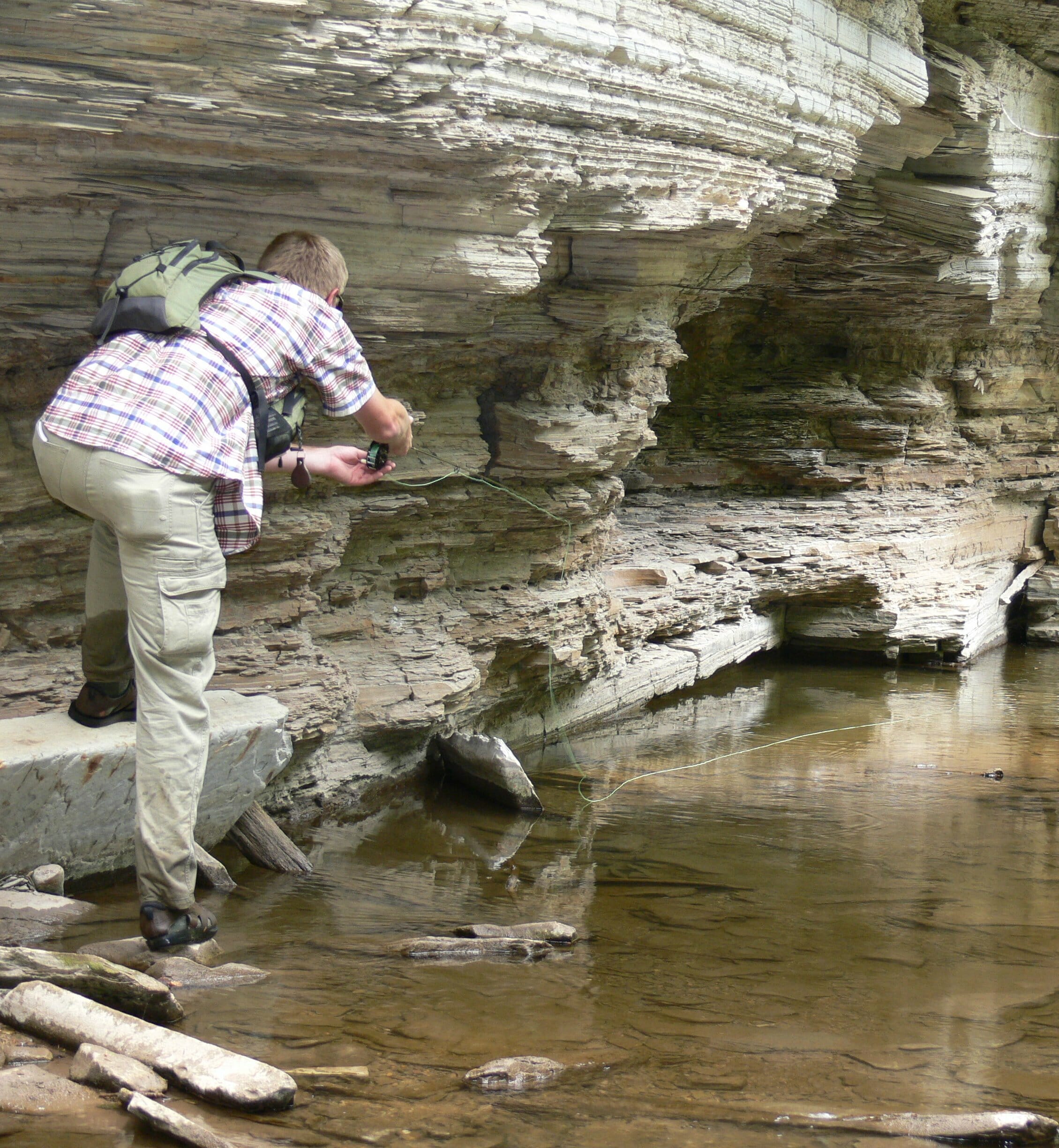Corey Fisher casts in the grottos of Parachute Creek atop the Roan Plateau in 2009.
You haven’t lived dangerously until you’ve subjected a rental car to the JQS Road.
OK, sure. That might be a bit of an overstatement. But the sketchy, rocky, always-washes-out-when-it-rains, track up the east side of Colorado’s Roan Plateau is easily one the more chancy routes a couple of adventuresome anglers can take to reach some of the most truly remarkable backcountry fishing in the West.
“Did you get the full insurance policy on this sucker?” my buddy Kirk Deeter asked me as I navigated the rented SUV up the dirt path just outside of the little town of Rifle.
My eyes glued to the gravel, knowing that any sharp rock or jagged slice of debris would spell doom for the shoddy, rental-car tires, I nodded.
“Yep,” I said. “But I don’t think I’m supposed to take it off the pavement. So if anything happens, we need to at least be able to get back to the highway.”
Kirk looked at me and laughed. When I didn’t laugh back, he stopped.
“You’re serious, aren’t you?”
“Yep.”
The piñons and junipers that line the old access road started to give way to the occasional spruce as we climbed to altitude. We were about to get to the best of the Roan, the part you can’t see from nearby I-70 as it winds its way along the Colorado River. From the highway, the Roan looks like a barren, rocky wasteland-alkali soil, scrubby stands of oakbrush and bitterbrush and bare rock loom over the river like a moonscape. It’s not fishy. It’s not terribly appealing. It’s typical high-desert steppe, and it’s not what most folks think of when they think of the Rocky Mountains of Colorado. There aren’t any high, jagged peaks that rise into tundra above timberline. No crystalline mountain lakes or big, burly rivers. And no paved roads, either.
And I suppose that’s a blessing, but it’s also been a curse. That crusty, uninviting outer shell doesn’t do much to inspire visitors, and it took a long time to convince the good folks of Colorado that this lonely stretch of cliffs and canyons was worth protecting from the drill bit. But, as I write this, the new Bureau of Land Management energy development plan for the Roan is now final. The best of the Roan-and once you get past that crusty outer shell, there are true treasures to be found-will be protected, while other areas will be responsibly developed for natural gas production. TU and our partners spent two years hammering out a collaborative deal with energy interests, and on Nov. 17, that deal gained federal approval.
It took a long time to arrive at this outcome-more than a dozen years-and it was anything but settled that day when Kirk and I trundled up that treacherous “road” to the top of the Roan all those years ago. At the time, Kirk wrote for Field & Stream, and I was directing communications for Trout Unlimited’s Public Lands Initiative. We were headed up to meet with Corey Fisher, TU’s senior energy policy director, and chase wild and native Colorado River cutthroat trout in Trapper Creek, one the streams TU fought like hell to protect.
Yes, there’s water up there. Cold, clear, high-country creeks nurture native cutthroat trout that evolved there for eons, above waterfalls, above the roar of the late 1970s oil shale boom and the subsequent bust, and above the manic gas field of the Piceance Basin. In these small streams, there is fly fishing treasure. And if you’re a mule deer hunter or an elk hunter, the Roan is your Elysium, even if you don’t know it yet.
An hour or so after we-and the rental car- survived the JQS Road, Kirk, Corey and I were descending into a seemingly bottomless canyon, the mesa tops of the Book Cliffs that straddle the Utah-Colorado border rising in the distance. It was early summer, and everything was bright and green. Aspens quaked in the mountain breeze and the smell of sage kicked up with every step we took down into Trapper Creek Canyon. Small grasshoppers flitted underfoot as we half walked, and half slid into the bottoms.
The creek is small, belying the steep descent. But its waters are clear, and in every pool, cutthroat fin in the current, largely unmolested. In minutes, we’d each coaxed fish to a fly, watching as they hardly hesitated to consider whether the offering was genuine. They’re respectable fish, too, not just little 8-inch small-stream trout (another creek atop the Roan, Parachute Creek, is home to introduced brook trout that are a bit smaller, but still a lot of fun). Foot-long cutties aren’t uncommon in Trapper Creek.

A native Colorado River cutthroat trout on the Roan Plateau. Photo by the author.
It’s tough fishing, though-willows drape the best pools, and the “trail” along the stream is more of a stock track for grazing cows that come and go over the course of the summer. We worked our way downstream for an hour or so, casting and catching as we went, knowing full well that if things didn’t go our way, this precious resource could one day be lost.
- TU/Field & Stream Best Wild Places: The Roan Plateau, Day One
- TU/Field & Stream Best Wild Places: The Roand Plateau, Day Two
- TU/Field & Stream Best Wild Places: The Roan Plateau, Day Three
Today is a day of celebration, and of relief. I knew little about this corner of Colorado until I visited it for the first time about a decade ago. I’ve been back many times since, taking reporters and photographers into this small swath of paradise in hopes of showing them just how magical it is. I’ve lived in the West my whole life, and I’ve seen one mountain lion in all those years. I saw it on the Roan. In my visits, I’ve watched a bachelor herd of trophy bull elk dive into cover as we topped a ridge on the way to chase trout. I’ve seen countless mule deer, including one massive trophy buck that took my breath away. The largest inland black bear I’ve ever seen was on the Roan, just down the stock drive from Parachute Creek.
It’s home to ruffed and spruce grouse, wild turkeys, coyotes, bobcats and raptors. And its fish are unique… magical.
I was once asked if I felt guilty telling the world about the Roan. I laughed and replied, “No way.” First, it’s no easy endeavor to fish it-there’s no trail into Trapper Creek, and the stock drive into Parachute Creek is almost as treacherous on the hiker as the JQS Road is on a rental car.
“Sometimes,” I said, “in order to save a place, you have to let the world know it’s there.”
The Roan is there. And, for the first time in a generation, it and its fish and game are safe. I’m grateful for the work TU has done, with the vital help of our partners, volunteers and, frankly, the industrial interests and the BLM for being willing to help find that sweet spot between development and resource protection.
Today’s agreement ensures a lifetime of opportunity for anyone willing to drive the JQS Road to experience it. I hope more people do.
Chris Hunt is the national editorial director of Trout Media. He lives and works in Idaho Falls, Idaho.



